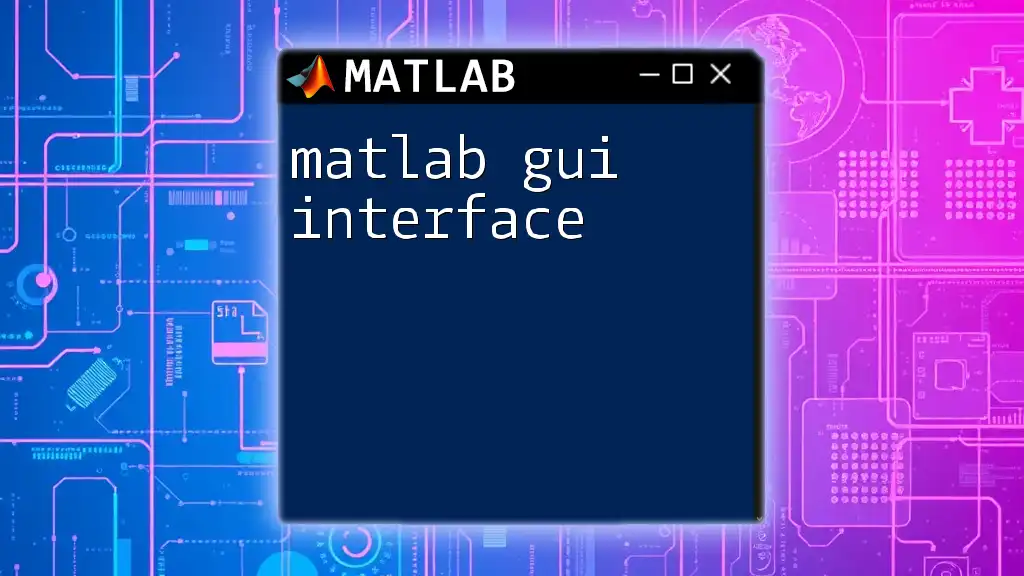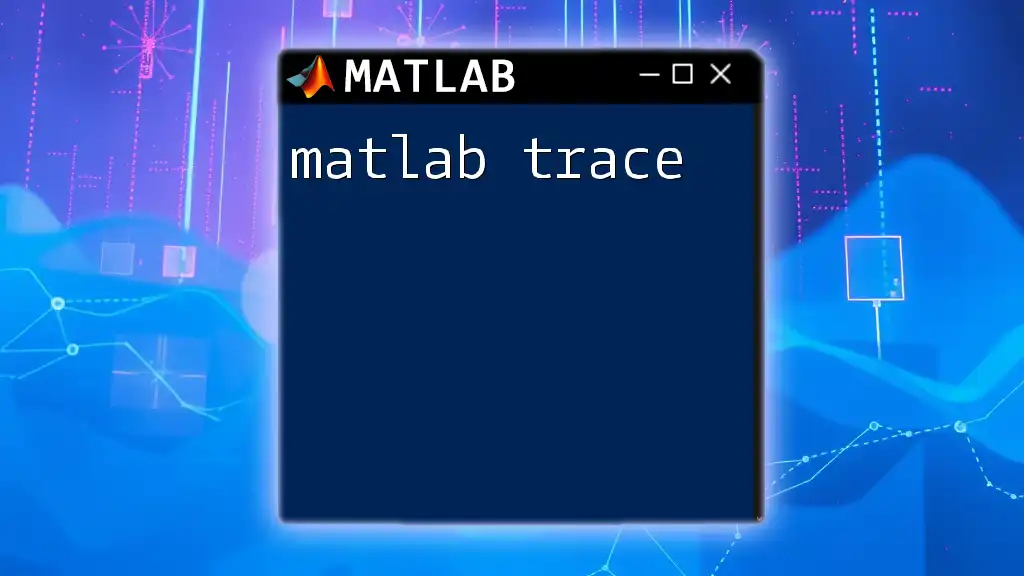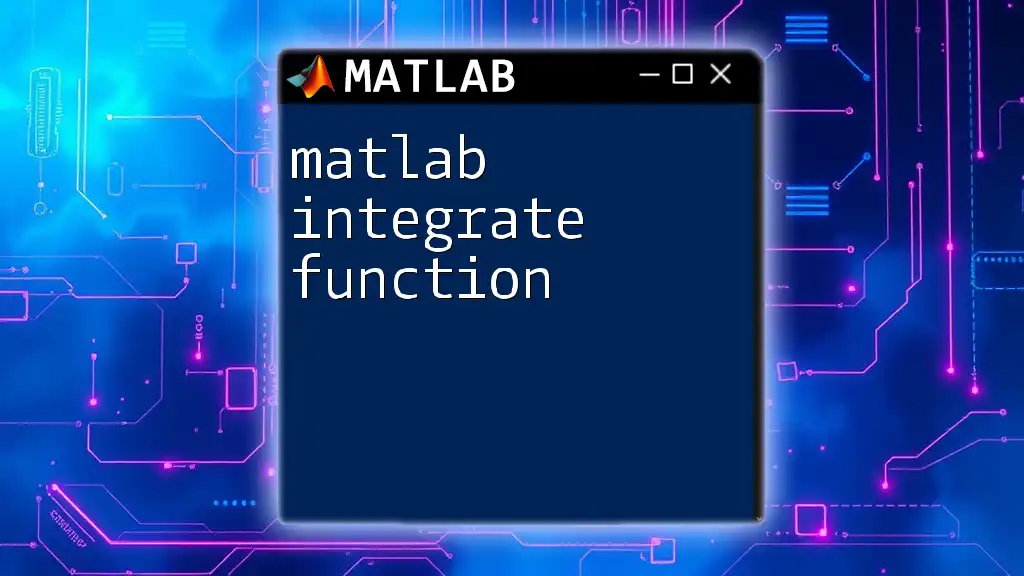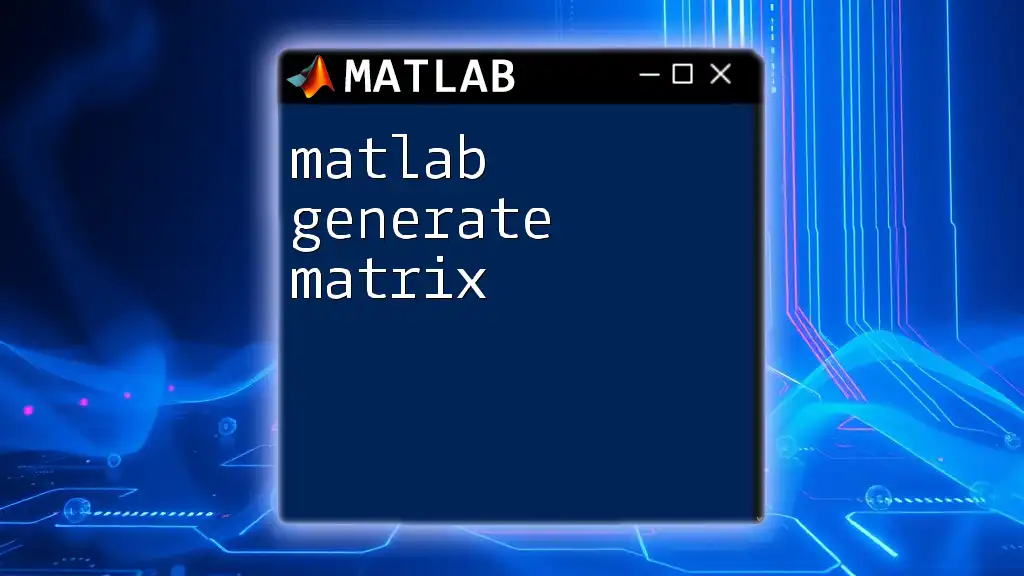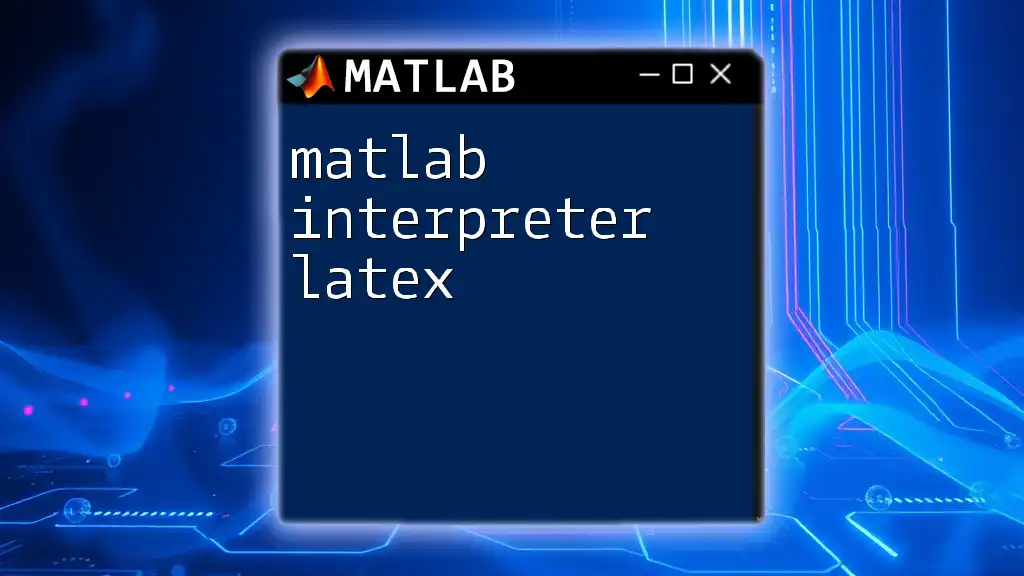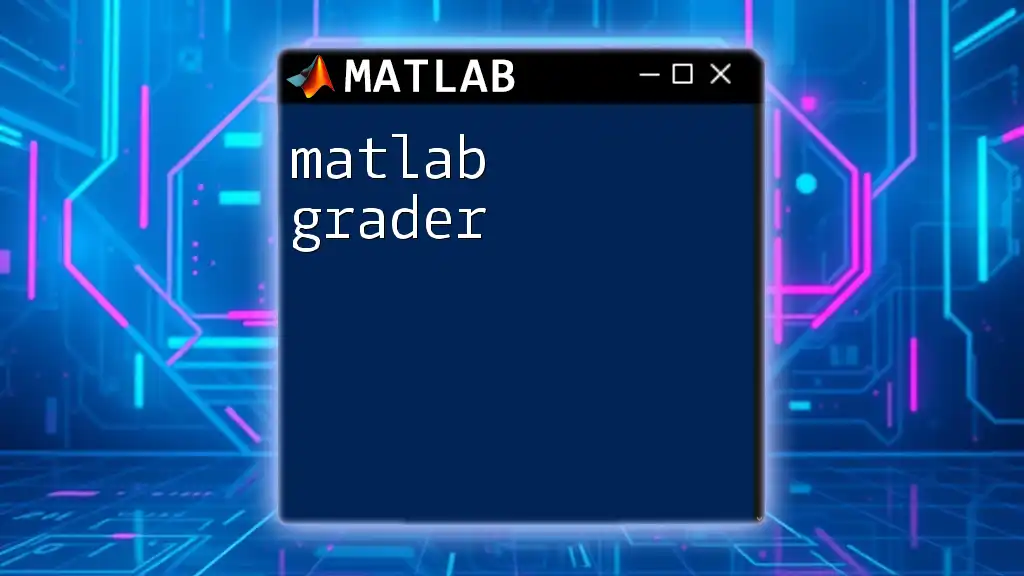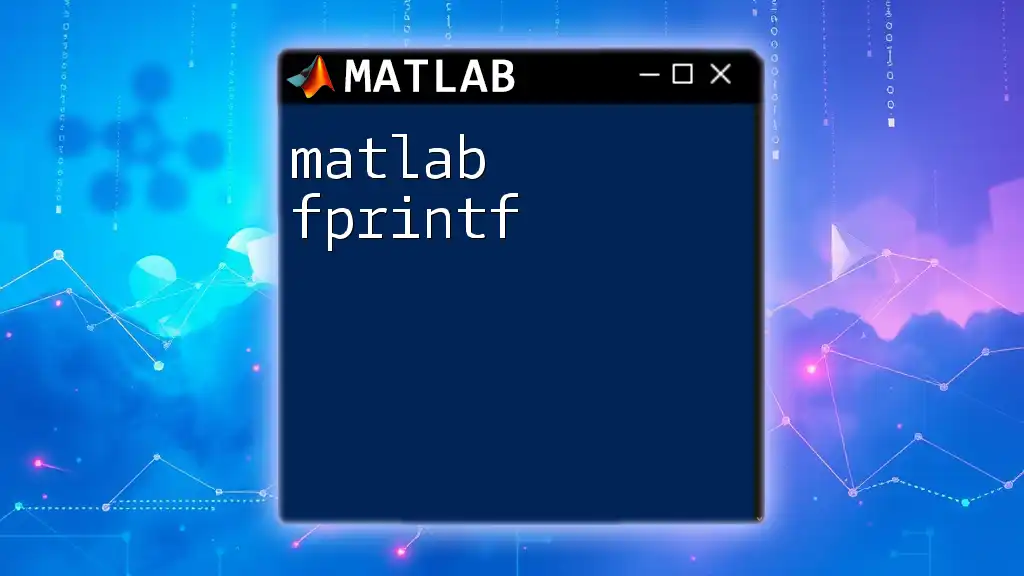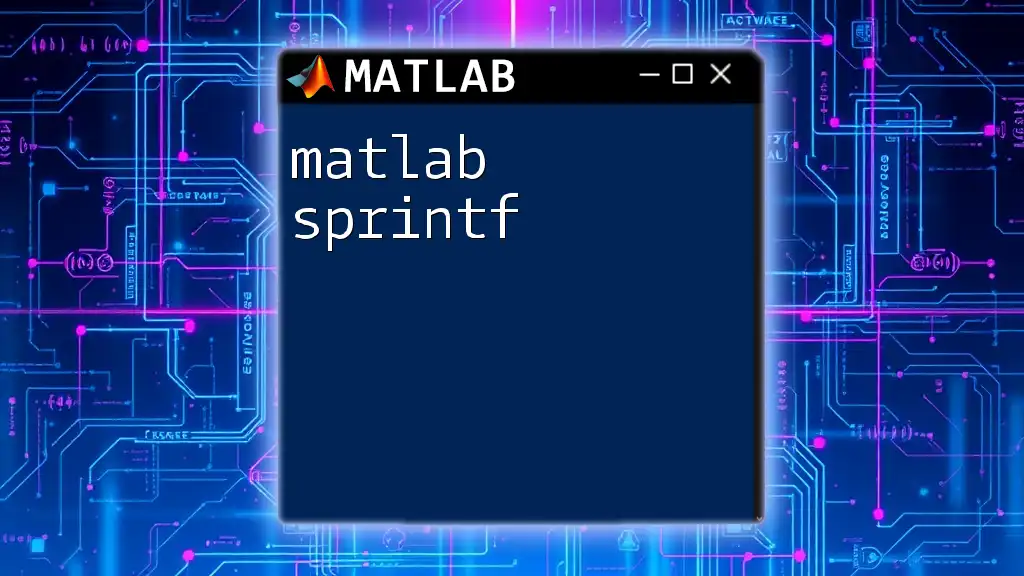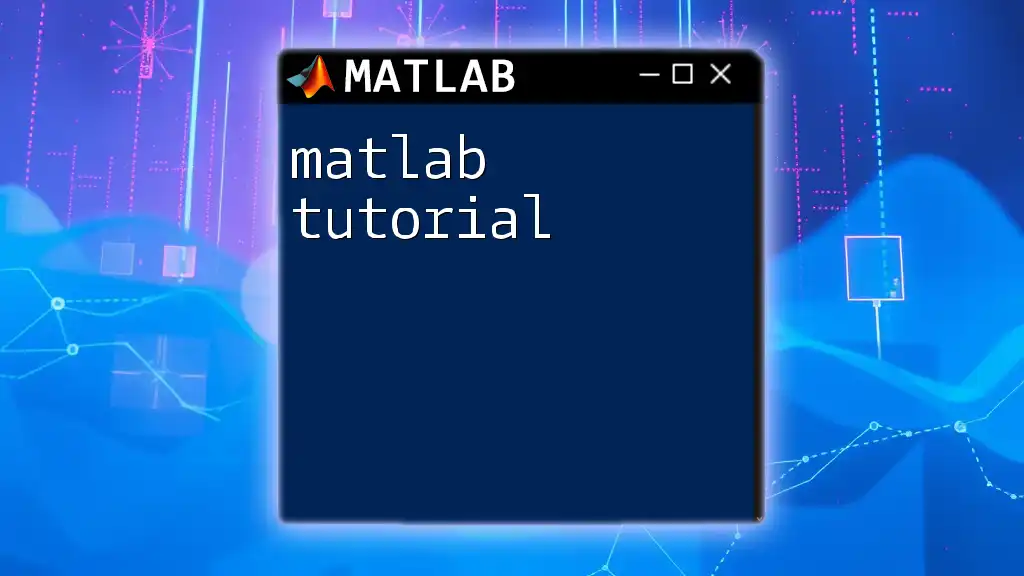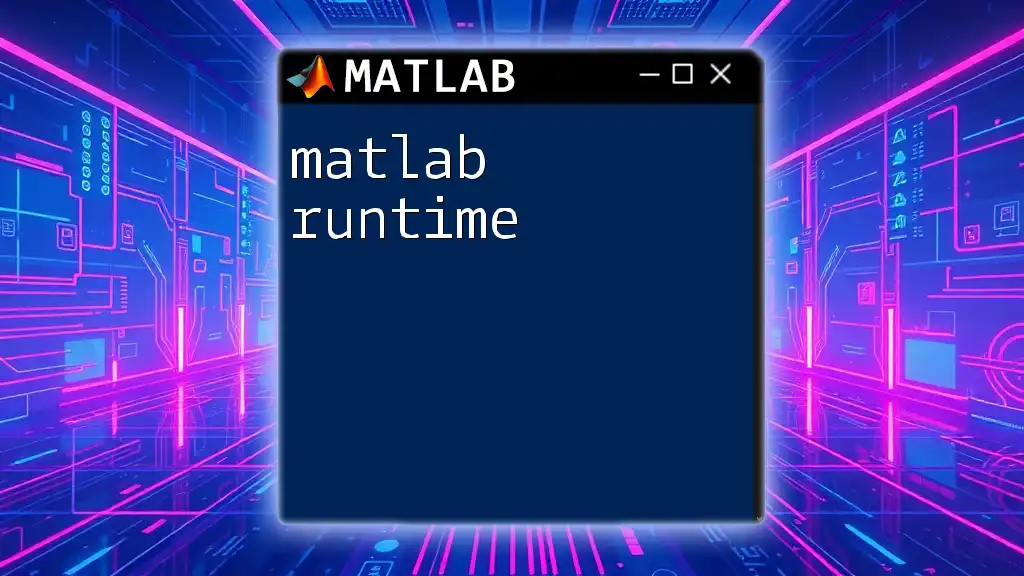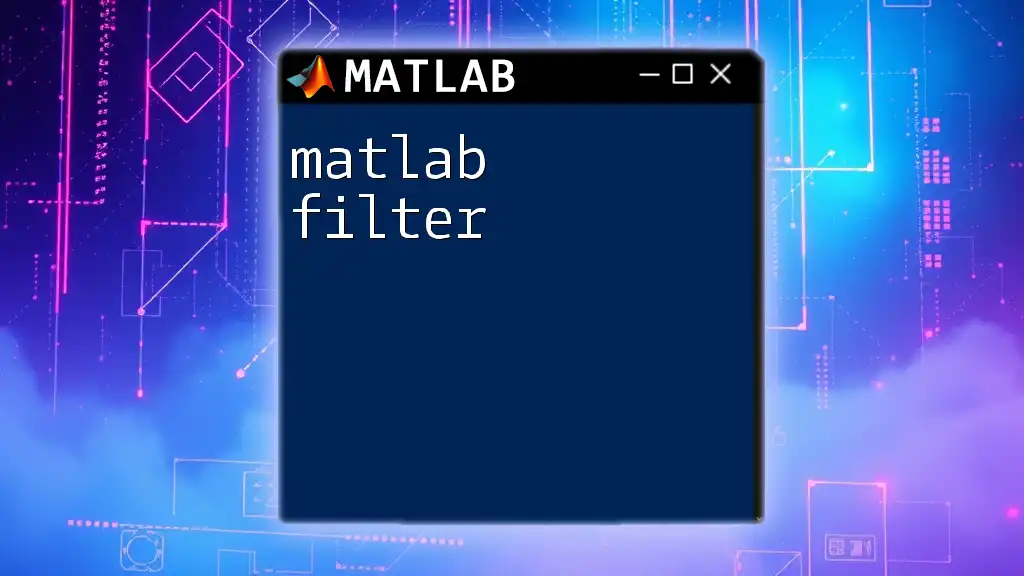The MATLAB GUI interface allows users to create interactive applications that enhance usability through graphical components like buttons, sliders, and menus, enabling a more intuitive way to execute commands and visualize data.
Here’s a simple example of creating a basic MATLAB GUI with a pushbutton that displays a message when clicked:
function simple_gui
f = figure('Position', [100, 100, 300, 200]); % Create a figure window
uicontrol('Style', 'pushbutton', 'String', 'Click Me', ...
'Position', [100, 80, 100, 30], ...
'Callback', @button_callback); % Create a pushbutton
function button_callback(~, ~)
msgbox('Hello, MATLAB GUI!'); % Message box on button click
end
end
What is MATLAB GUI?
A Graphical User Interface (GUI) in MATLAB enables users to create rich, interactive applications that simplify the interaction with complex MATLAB functionality. While traditional command-line interfaces require users to type commands for every action, a GUI presents a visually engaging means to manipulate inputs and outputs through buttons, sliders, edit boxes, and other interactive elements. This interface is vital for those who prefer visual tools and enhances the ability to engage with data and functionality intuitively, thereby broadening the accessibility of MATLAB's powerful features.
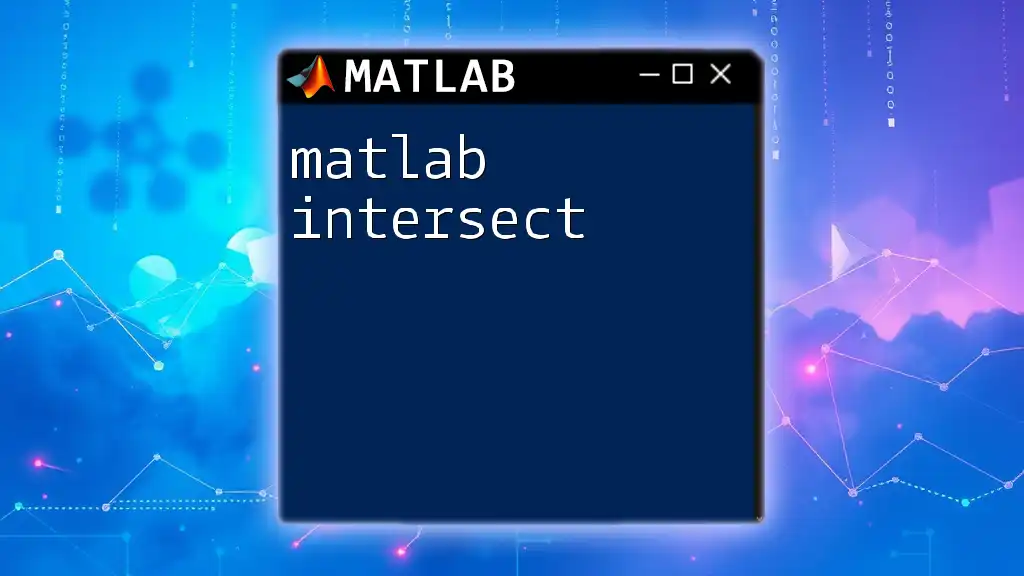
Applications of MATLAB GUI
MATLAB GUIs find broad applications across various industries:
- Engineering: Engineers often use GUIs for simulations and modeling.
- Data Visualization: Analysts utilize GUIs to create interactive data visualizations, making insights more accessible.
- Educational Tools: GUIs are crucial for teaching complex topics in science and engineering, as they allow students to visualize concepts dynamically.
These applications demonstrate how a well-designed GUI can facilitate users in leveraging MATLAB's capabilities without deep technical knowledge.
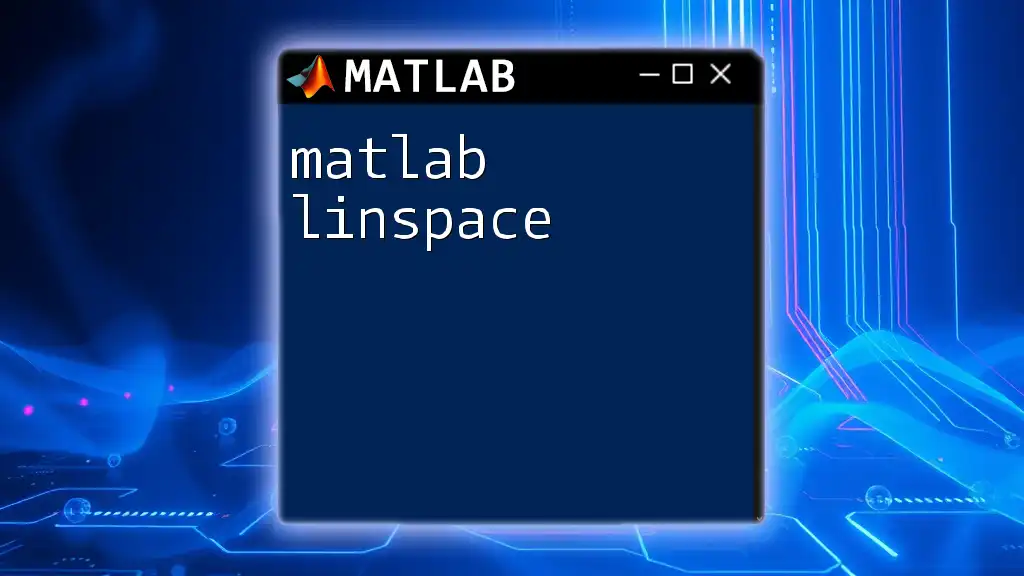
Getting Started with MATLAB GUI
Requirements for Developing a MATLAB GUI
To embark on your journey in developing a MATLAB GUI, ensure you have:
- The latest version of MATLAB installed on your system.
- Access to the necessary toolboxes, particularly the App Designer and related graphics capabilities.
Basic Concepts of GUI Design
Before diving into development, it’s essential to grasp key design principles. A successful GUI should:
- Be user-friendly: Allow users to navigate effortlessly and intuitively.
- Maintain functionality: Each component should serve a clear purpose.
- Exhibit aesthetics: A visually appealing design enhances user engagement and experience.
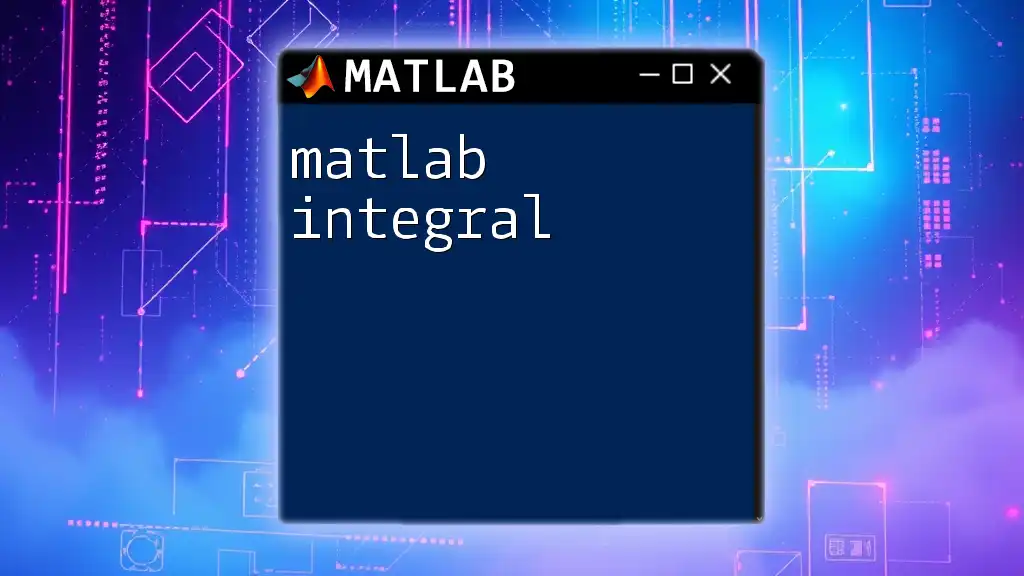
Creating Your First GUI
Using the GUIDE Tool
The Graphical User Interface Development Environment (GUIDE) is an integrated tool within MATLAB that allows users to build GUIs visually. To begin, launch GUIDE through the MATLAB command window by typing:
guide
Example: Creating a Simple GUI that Adds Two Numbers
Here is a simple example of a MATLAB GUI that allows users to enter two numbers and displays the sum:
function simple_addition_figure()
% Create figure window
hFig = figure('Position',[300,300,250,150]);
% Create UI elements
uicontrol('Style','edit','Position',[50,80,150,30],'Tag','input1');
uicontrol('Style','edit','Position',[50,40,150,30],'Tag','input2');
uicontrol('Style','pushbutton','String','Add','Position',[50,120,150,30],...
'Callback',@addNumbers);
function addNumbers(~,~)
% Callback function to add numbers
num1 = str2double(get(findobj('Tag','input1'),'String'));
num2 = str2double(get(findobj('Tag','input2'),'String'));
msgbox(['Result: ', num2str(num1 + num2)]);
end
end
In this example:
- We create a figure window that serves as our GUI interface.
- Two edit boxes allow users to input numbers.
- A push button triggers the addition operation. The callback function `addNumbers` retrieves user inputs, computes the sum, and displays the result in a message box.
GUI Components Overview
Familiarizing yourself with various GUI components is crucial:
- Buttons: Enhance interactivity and execute commands when clicked.
- Edit Text: Capture user inputs or display information.
- Labels: Present fixed text or instructions to aid user navigation.
- Sliders and Checkboxes: Allow easy manipulation of values without needing to type.
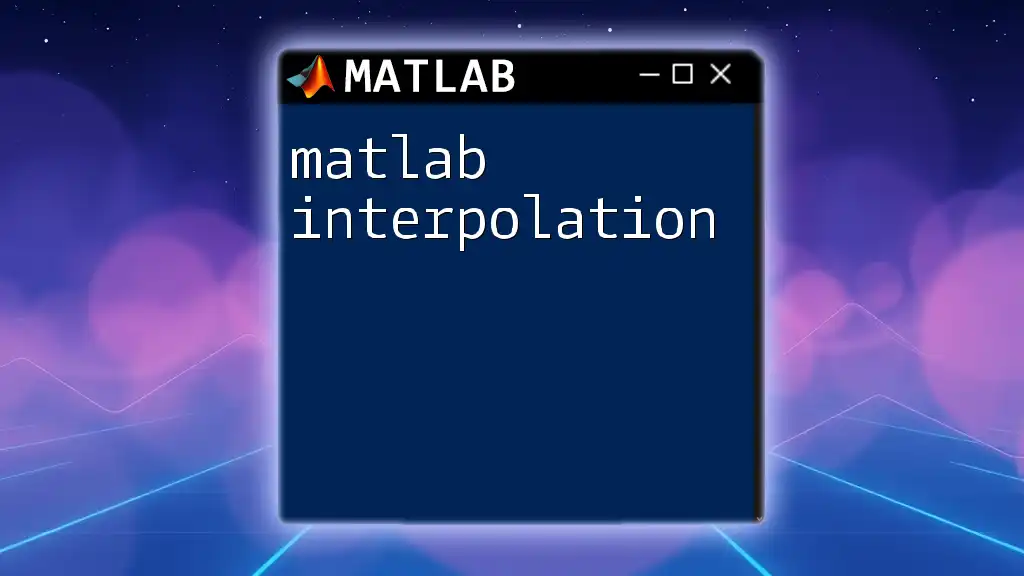
Advanced GUI Techniques
Using App Designer
App Designer is a robust tool utilized for developing professional apps within MATLAB. It provides a drag-and-drop layout, making it simpler to create and customize interfaces.
Example: Creating a Temperature Converter App
Here's how you can build a straightforward temperature converter app using App Designer:
function convertTemperature(~,~)
celsius = str2double(app.EditField.Value);
fahrenheit = celsius * 9/5 + 32;
app.ResultLabel.Text = ['Fahrenheit: ', num2str(fahrenheit)];
end
In this app, users enter the temperature in Celsius, click a button, and the GUI displays the equivalent temperature in Fahrenheit.
Adding Callbacks and Events
Callbacks are essential since they define the actions executed in response to user interactions. For instance, in the temperature converter example, the callback function `convertTemperature` performs calculations when users activate a button. Learning to effectively implement these will significantly boost your GUI's interactivity.
Customizing User Experience
Layout Management is imperative for organizing GUI elements effectively. You can leverage grids and panels to create a clean and structured layout, ensuring users find what they need quickly.
Styling GUI is also important. Tailor fonts, colors, and sizes to enhance readability and brand identity, making your application visually compelling.
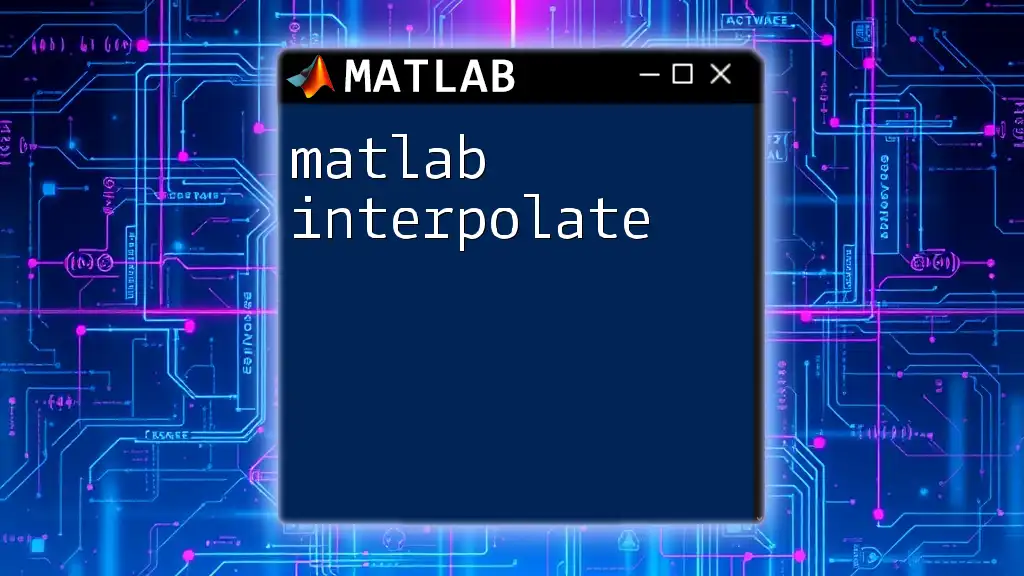
Debugging and Testing Your GUI
Common Errors and Troubleshooting
As you develop your GUI, be prepared to encounter errors. Some common issues include:
- Incorrect component properties.
- Errors in callback functions due to incorrect variable types.
- GUI elements not displaying as expected.
Employ MATLAB's debugging tools, such as breakpoints and the workspace, to trace issues and resolve them effectively.
User Testing for Usability Improvement
Gather user feedback by testing your GUI with actual users. This insight is invaluable for refining usability, revealing aspects that may need simplification or enhancement, and ensuring the interface meets user needs.
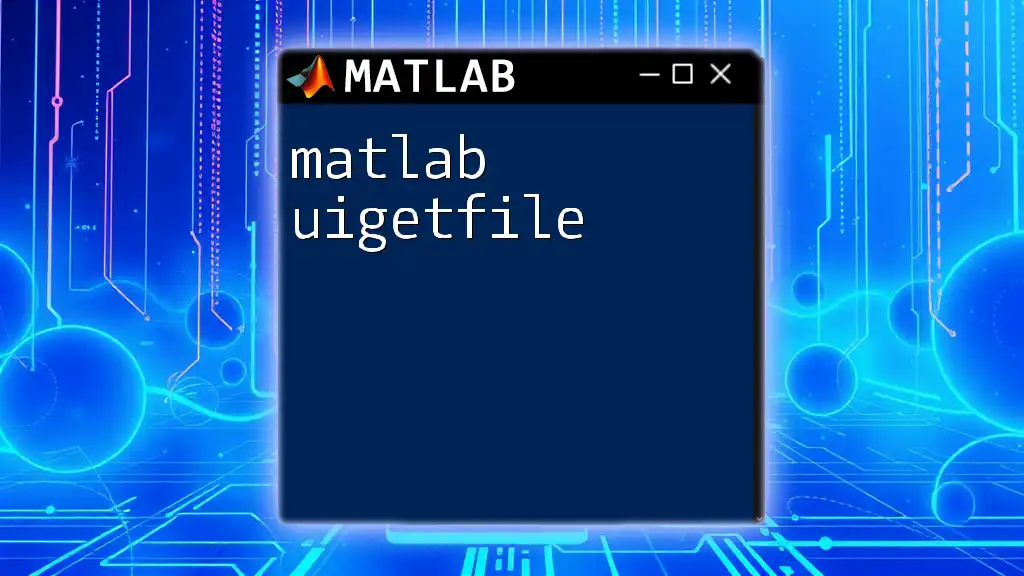
Best Practices for MATLAB GUI Development
Design Principles
Adhere to best practices to create a quality GUI:
- Keep the interface simple and intuitive.
- Ensure consistency across different components.
- Prioritize accessibility for all users.
Performance Optimization
Enhancing performance can have a significant impact. Use efficient coding techniques, such as pre-allocating arrays and avoiding excessive redraws of the GUI, to minimize load times and improve responsiveness.
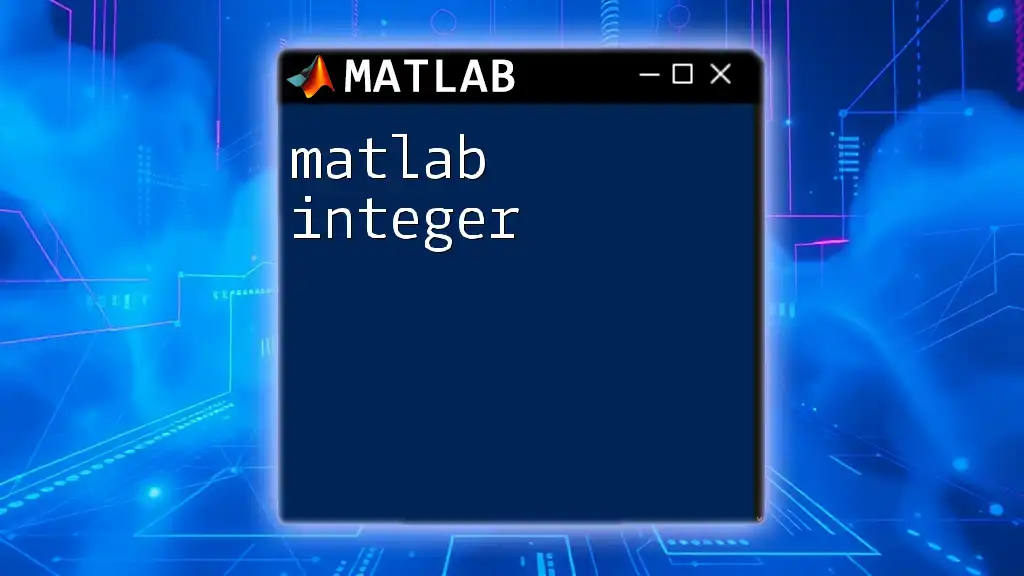
Conclusion
Creating a MATLAB GUI interface empowers users to interact seamlessly with MATLAB's powerful capabilities. By following best practices, employing effective techniques, and focusing on usability, you can develop applications that are not only functional but also a pleasure to use. Embrace the tools and techniques available in MATLAB and let your creativity shine—begin building your GUI today!
References and Further Reading
For further exploration, check out MATLAB's official documentation on GUI development. Here, you will find comprehensive insights, tutorials, and community forums where you can learn and troubleshoot effectively. Consider familiarizing yourself with key MATLAB functions designed for GUI development, such as `uicontrol`, `figure`, and `msgbox`, to enhance your skills and understanding in creating intricate GUI applications.

